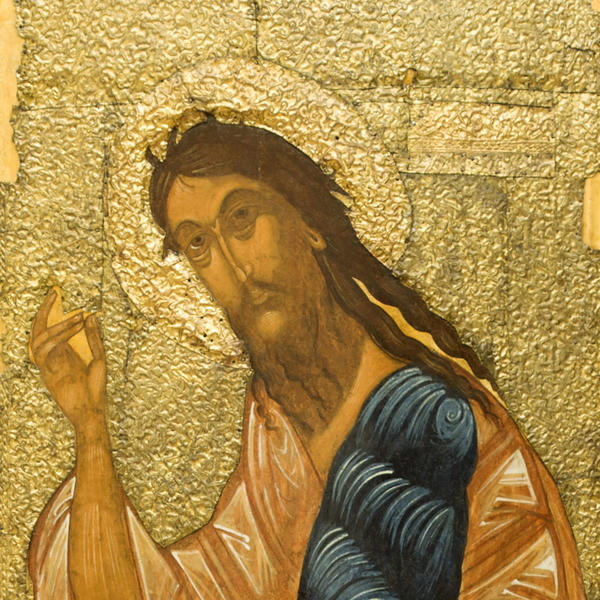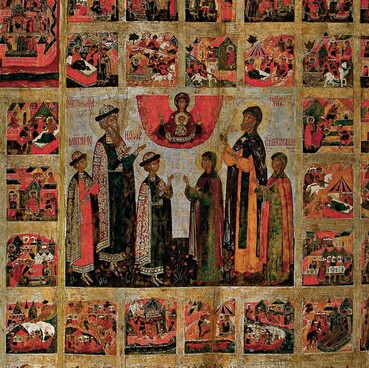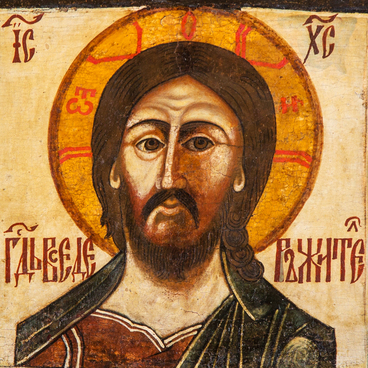The icon of John the Baptist was painted by an unknown author in the second half of the 16th century.
Saint John, the last Old Testament prophet, baptized Jesus Christ and predicted the Savior’s coming long before he was born. Initially this icon depicting John the Baptist was set in one of the church iconostases of the Holy Transfiguration Monastery in the deesis row. Later it was displayed in the Transfiguration cathedral of the Transfiguration monastery “on the north side opposite the pillar”. The icon was set on the wall in the gilded icon-case.
Saint John, the last Old Testament prophet, baptized Jesus Christ and predicted the Savior’s coming long before he was born. Initially this icon depicting John the Baptist was set in one of the church iconostases of the Holy Transfiguration Monastery in the deesis row. Later it was displayed in the Transfiguration cathedral of the Transfiguration monastery “on the north side opposite the pillar”. The icon was set on the wall in the gilded icon-case.
The icon has several distinctive personal features that can often be found at the other Murom icons of that period. A light-brown sankir paint (a mixture of black paint and ochre) was used as the first thin layer. The sankir was painted in a brush-stroke technique, and there is a dense layer of yellow paint above it. The chiaroscuro is not used that is why there are several edgy colour gradients (e.g. on the neck under the chin). The ears of John the Baptist were painted eyelet-shaped a bit lower than usual. The dark-brown eyebrows are lifted high. The joints and muscles of the saint’s arms and legs are emphasized. The clothes are painted with a liquid colour that is schematically divided into long rectangular and corner planes by white pigments.
The icon is characterized by broad and wide brush strokes. Such style was not typical for the Russian icon painters. The art historians assume that the unknown icon painter was a master of murals and got used to working with large planes. He painted in a free way paying no attention to the mullion frames so the image goes beyond the edges. The scroll with the gospel text is painted partially. The red colour of the scroll is also unusual for the Russian icons.
The icon was sent to restoration to the Igor Grabar Science and Restoration Centre in 2009 and the works went on until 2011. A group of restorers was headed by Y.Mosunova who commented on their work:
The icon is characterized by broad and wide brush strokes. Such style was not typical for the Russian icon painters. The art historians assume that the unknown icon painter was a master of murals and got used to working with large planes. He painted in a free way paying no attention to the mullion frames so the image goes beyond the edges. The scroll with the gospel text is painted partially. The red colour of the scroll is also unusual for the Russian icons.
The icon was sent to restoration to the Igor Grabar Science and Restoration Centre in 2009 and the works went on until 2011. A group of restorers was headed by Y.Mosunova who commented on their work:




